...tick...tick...tick...
6.6 /10 1 Votes
Director Ralph Nelson Screenplay James Lee Barrett Writer James Lee Barrett Language English | 6.6/10 IMDb Genre Drama, Action Duration Country United States | |||||||||||||||||||||||||||||||||
 | ||||||||||||||||||||||||||||||||||
Release date January 9, 1970 (1970-01-09) Producers Ralph Nelson, James Lee Barrett Cast Jim Brown (Jimmy Price), George Kennedy (John Little), Fredric March (Mayor Jeff Parks), Lynn Carlin (Julia Little), Don Stroud (Bengy Springer), Janet MacLachlan (Mary Price)Similar movies Reservoir Dogs , Moonrise Kingdom , The Great White of Lambaréné , Bad Boys , A Time to Kill , Blue Crush 2 Tagline Two men with nothing in common but the hate that surrounds them. | ||||||||||||||||||||||||||||||||||
...tick...tick...tick... is an American crime drama movie made in 1970, directed by Ralph Nelson. Racially provocative for its time, it stars Jim Brown in the role of an African American man elected as the sheriff of a rural county in the American South. It has become something of a cult classic for its cutting-edge portrayal of racial relations and its tense narrative.
Contents
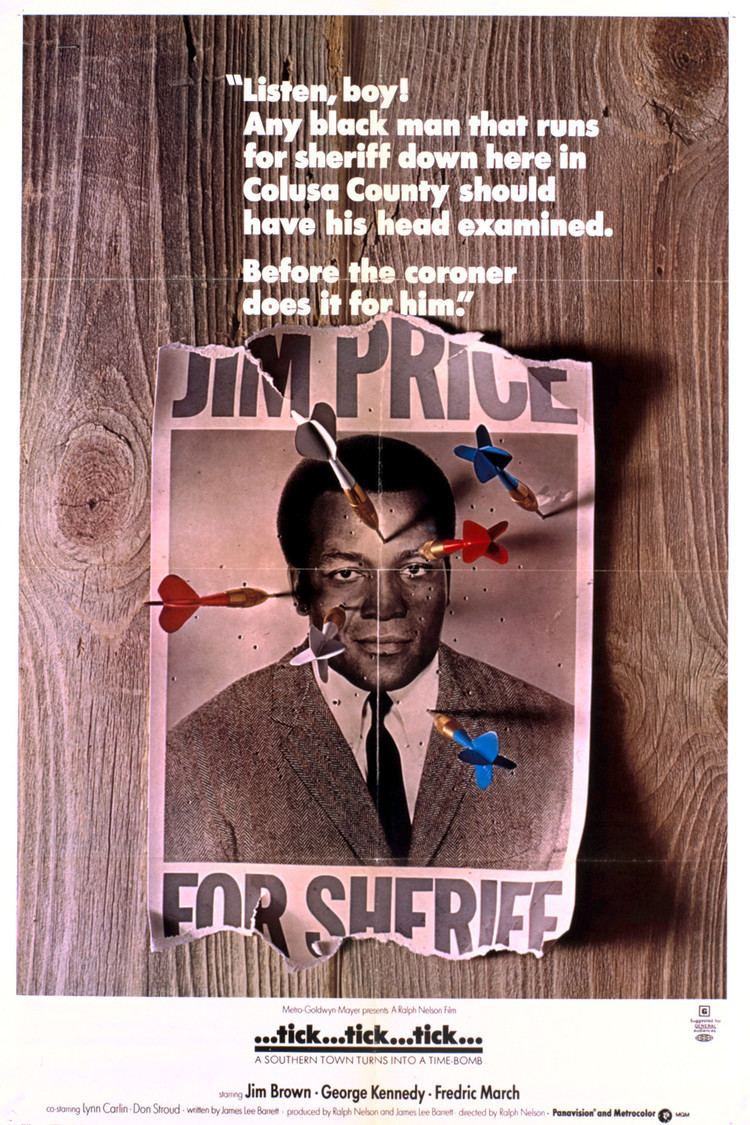
Plot
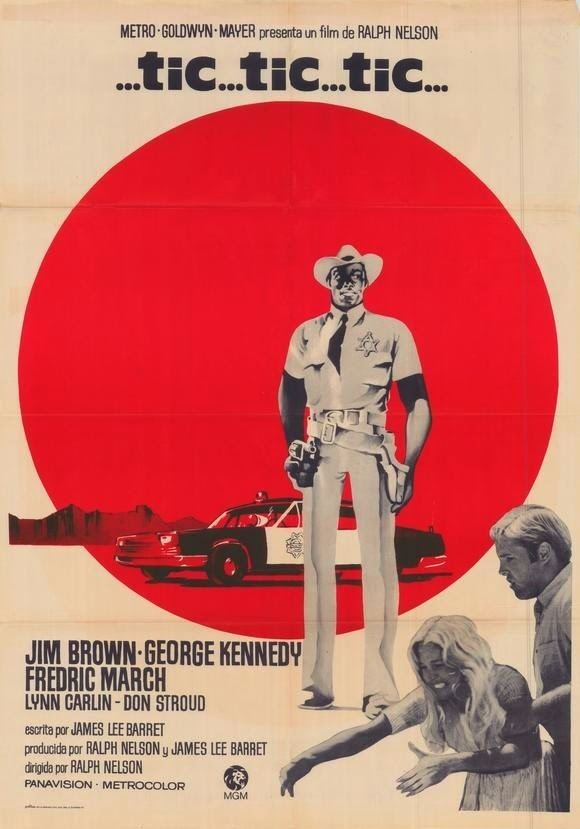
In a small Southern town, deputy Jim Price is elected sheriff over John Little, the incumbent. Racial tensions exist in the community, and Price gets little assistance from Little, leaving office, or from Mayor Parks, who insists he be consulted on any decision the new sheriff makes.
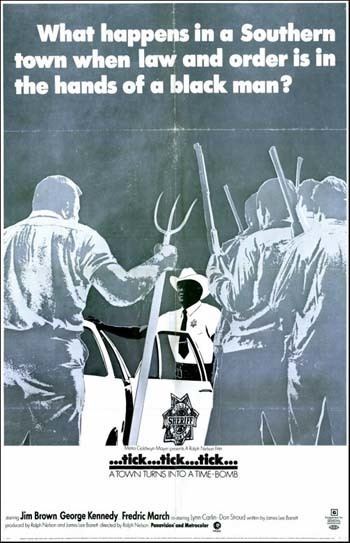
A white man, John Braddock, is arrested on a manslaughter charge after his drunken driving causes the death of a young girl. Braddock's father carries considerable influence and demands his son be freed. Price's deputy, Bradford Wilkes, is beaten by Little's former deputy, Bengy Springer.
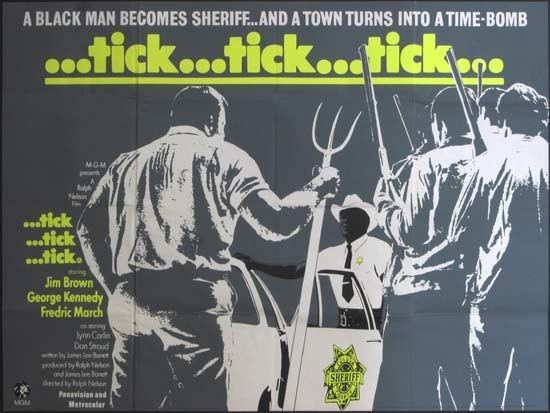
Another arrest is made, this time of a black man, George Harley, accused of rape. The townspeople's mood turns uglier by the minute, particularly when Braddock's father threatens to spring his son by force if necessary.
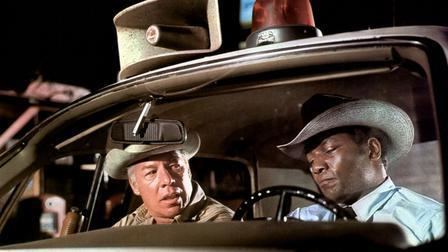
Little's conscience gets the better of him. He agrees to become Price's new deputy. Together, they try in vain to persuade other men in town to side with them against Braddock's vigilantes and to convince the mayor to call in the National Guard for help. Alone against the mob, Price and Little form a barricade and prepare for the worst when their fellow townsmen suddenly join them in the street.
Promotion
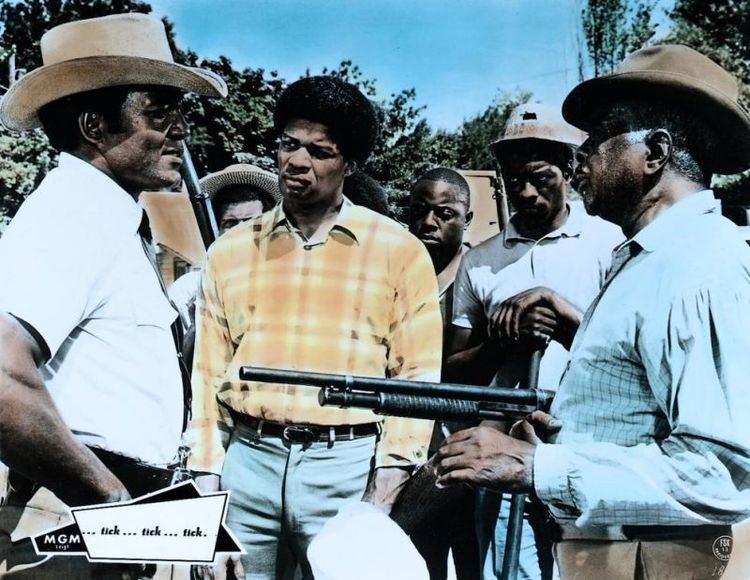
A radio advertisement for the film summarized the story simply: "tick...tick...tick is the sound of time...running out."
Production
The movie was released the same year as Nelson's Soldier Blue.
The story can be viewed as something of a counter-narrative to In the Heat of the Night, which featured Sidney Poitier as a Philadelphia detective who helps the white chief of police (played by Rod Steiger) investigate a murder in a small town in Mississippi. Poitier's character comes to earn the respect of Steiger's, but he remains an outsider, able to navigate the complexities of being black in a small Southern town because of the unfamiliarity of his style. In contrast, ...tick...tick...tick... places a local African American fully in charge of the police, aided somewhat by the white former sheriff.
Screenwriter and producer James Lee Barrett also created the television adaptation of In the Heat of the Night.
The film's lead was played by Jim Brown, who had recently retired as a professional football player. Brown and George Kennedy had previously appeared together in the war film The Dirty Dozen. Another co-star, Bernie Casey, had played in the National Football League from 1961-68, his career intersecting with that of Brown, who was an NFL star from 1957-65.
The movie has a somewhat low-budget feeling, and the use of Brown in the lead role has led its being often mentioned in the context of the blaxploitation genre.
It was filmed in and around the town of Colusa, California, whose central courthouse square was modeled on similar squares found in the American South. The same courthouse was also used for exterior shots in the 1962 classic To Kill a Mockingbird. The film's setting is called Colusa County.
...tick...tick...tick... was the penultimate film appearance of screen legend Fredric March.
Cast
Release
The film was released theatrically in the United States by Metro-Goldwyn-Mayer in January 1970.
The film was never given an official VHS release in the United States. It was released on DVD in 2012 via the Warner Archive on-demand service. This release is anamorphic in 2.40:1 aspect ratio.
References
...tick...tick...tick... Wikipedia...tick...tick...tick... IMDb tickticktick themoviedb.org
